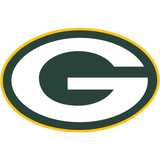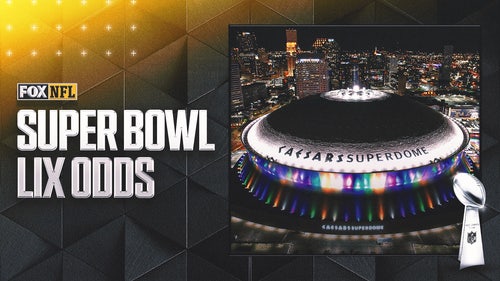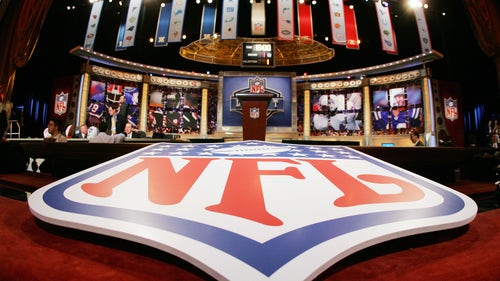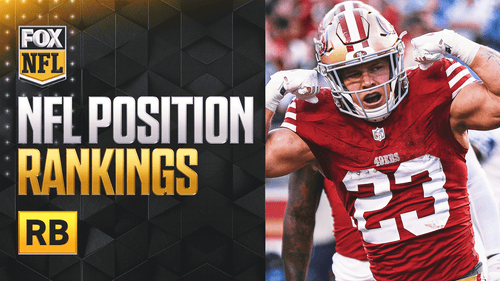
My Time in Packerland

It’s Green Bay Week at The MMQB: Our staffers are embedded for a game week in Titletown, doing a deep dive into the NFL’s most tightly knit community. We’ll explore the dynamic between the players and the people of Green Bay and provide a glimpse into what makes it a bucket-list destination for football fans. Follow on Twitter for updates, Facebook for live streams, and Instagram for our “Humans of Green Bay” project.
Some of The MMQB’s writers have embedded in Green Bay this week to get a feel for the NFL’s smallest market. I’ll be joining them when I fly out to Sunday’s game, but I already know the city inside and out. I lived there for nine years when I worked as vice president of the Packers.
Nine years at one place in the NFL is a veritable lifetime; it is the same number of years that the man who hired me, Hall of Fame general manager Ron Wolf, spent with the Packers and two years longer than Mike Holmgren, who has a street named after him there, was in Green Bay. I worked with three general managers (Wolf, Mike Sherman and Ted Thompson), three head coaches (Ray Rhodes, Sherman and Mike McCarthy) and countless assistant coaches and staff members. Now almost eight years removed, there are only two players—Aaron Rodgers and Mason Crosby—who were with the team when I left Wisconsin.
• LIFE IN GREEN BAY: Bow-Hunting With Aaron Rodgers’ Backup
It is one thing to fulfill a common bucket list item of going to a game at Lambeau Field. It is quite another to actually live there. I was, and still am, asked about
Green Bay all the time, with usual questions about the weather (yes, it’s as cold as you imagine), whether I knew Brett Favre or Rodgers (yes, very well), or my favorite one, which a couple players seemed to ask every year as they left for the offseason: “Do you actually stay here all year round?” (Yes, it was my job!) I do admit, however, to asking Wolf during my interview, “No offense, but do I have to actually live here to do this job?” In typical direct Wolf fashion, he answered, “No offense taken, but yes.”
Here are a few memories of The Green Bay chapter in my life that I look back on with fond memories.
All Packers, All the Time
I have not been in a place that wraps itself around a sports team like the community does in Green Bay.
Wearing Packers gear was standard wardrobe, whether to work, school, bars or restaurants, and early on we found out the hard way. Evidently, it was tradition at most every school in Green Bay to wear Packer jerseys on Fridays before home games. On the first Friday of my first season there, only two kids in my sons’ school didn’t have jerseys on—they were my sons and they did not own any at the time. I made sure to go to the Packers’ Pro Shop the next week to get them some jerseys.
The real awakening happened when we searched for a home to purchase. Not only did every property we looked at have Packer memorabilia somewhere in the house, but it seemed like most homes had, for lack of a better phrase, a shrine to the Packers: spaces with Packers carpeting, chairs, blankets or wallpaper that marked the altar people where watched games and practiced their religion of football. And in virtually every home we saw Packers stock certificates, with no dividend value; they were proudly displayed among the most prized possessions of Green Bay residents.
• LOOK THE PART: Green Bay Gear Guide
I remember boarding a plane in Chicago bound for Green Bay and having one of these frustrating experiences of sitting at the gate with no information from the cockpit. Finally, the captain came on and announced, “Well, folks, sorry to say it looks like at least an hour before wheels up. But hey, we’ll get you there in plenty of time for tomorrow’s Packers game!” While I stewed, the rest of the plane cheered.
Speaking of planes, there were times where we returned from a game either after or in the midst of a snowstorm. When we came to the area where our cars were parked at the airport, we noticed that the snow and ice had been brushed off our cars. When I asked who had done that, I was told, “Fans. They do it all the time.” One can only imagine that happening in any other NFL market.

Unique
As someone who had lived only in bigger cities, it took a while to assimilate into the Green Bay culture, even needing to listen closely to properly understand the accent and get used to hearing “Hey der” … “Ya” … “You betcha!” … “Pyackers” and “Are you coming with?”
It didn’t take long to realize that hunting was a big part of the culture in Green Bay, although I never partook myself. I remember wondering what was going on when we played in my first game during hunting season and saw Lambeau full of the blaze orange outfits of hunters coming in from the woods to watch the team. And seeing dead deer on the hoods of cars driving down the highway was a new one for me. Talk about double takes!
Everyone asks about the cold. Having lived in Boston, I knew of cold, but Upper Midwest cold is a different kind of winter. Even now, when there is a cold spell where I live in the East Coast, I often hear, “You must be used to it; you lived in Green Bay!” You never get used to that, though. I grew to tolerate the cold and learned the art of layering up to run, snowshoe, sled and walk my dogs. And as a runner and fitness nerd, I marveled at the hardiness of Green Bay runners who set out every morning in the cold, snow and ice.
• ROBERT KLEMKO: How Reggie White Made Green Bay Cool
I remember one of the first banquet-type events I went to soon after arriving in Green Bay. The venue was not called a restaurant; it was a “Supper Club.” I will never forget waiters serving large and very full glasses of whole milk to every guest. I felt some stares having a full glass throughout the meal while others were drinking it, so I drank a few gulps, upon which the waiter was filling my plus-size glass. This was truly the Dairy State.
There was a healthy food place that I went to all the time, the Urban Frog, where I could get juices, wheatgrass shots, and the stuff that you would not expect to find in the land of beer and brats. I would go there with Aaron Rodgers (name-drop) and a few other players; I always hoped there were enough of us supporting the place to keep it in business. As for restaurants, Hinterland—where The MMQB had a tweetup this week—was one that could fit in any city, with great atmosphere, food and friendly owners. On Saturday nights before home games, network and officiating crews working the game would inevitably be eating there. Hinterland is moving to be next to Lambeau in the new development that will feature a new Kohler lodge and sledding park.
As Jews, we were very much in the minority in largely Catholic Green Bay, but found everyone to be tolerant and welcoming. Yes, there is a temple in Green Bay (another question I often received from outsiders), said to have close to 200 members, and we did attend a couple times a year (I would seen Wolf and his family there as well). I always joke that when my family left Green Bay, we took about 20% of the Jewish population with us.
The overwhelming feeling about Green Bay and the people, however, is that they represent some of the nicest people I have ever met: honest, humble and true to the good. My family and I formed lifelong friendships there.

Nowhere to Hide
I was not a coach; I was not a player; I was not the general manager, but I soon realized that it did not matter. This was a place where, like the Cheers bar, everyone knew your name.
I was pumping gas one day when tapped on the shoulder. Startled, I looked back at a man in a suit asking, “How we doing on that Donald Driver contract?” Another time I was at a restaurant and a couple stopped at the table to ask, “Is Aaron Rodgers really going to be the guy after Brett?” (I heard that one often, the answer was always, “Yes, he is.”) A fan approached me on vacation in Cancun and asked me why we drafted a kicker (Crosby). My wife was asked about my Brett Favre negotiations when she was checking out of the grocery story; my sons were asked by their classmates why we let Darren Sharper go to the Vikings.
The fervor extended far beyond Green Bay. I remember one year when I had a rare day to myself in California before a game against the 49ers. I took a trip out to the wine country, where I noticed a little winery far off in the hills and found my way there. I was enjoying the quiet of this little vineyard when, out of nowhere, I heard the rumble of buses. When I asked the proprietor about them, he said they were Packer fans from Green Bay in for the game. I thanked him and scooted out the back past dozens of fans in head-to-toe Packer gear, shaking my head and smiling at Packer nation infiltrating this remote winery in Sonoma.
Similarly, I remember traveling to New York to meet with an agent for an important player contract negotiation. In my six-block walk to meet him, I noticed three Packer hats/coats and only one Giants and one Jets gear. As I entered that negotiation, I truly felt the weight of this vast following on my shoulders.

Responsibility
I grew to view the Packers as a public trust and myself as a steward of that trust. I operated with the constant guiding principle of doing what was in the best interests of the shareholders, of what would be in the best short- and long-term interests of this powerful brand.
Our structure—having no owner and an administrative arm that rarely, if ever, interfered—allowed great autonomy. I counted my blessings when hearing about colleagues dealing with the whims of ownership, including stories of owners who impulsively wanted a player or coach signed, fired, released, drafted, etc. On the other hand, we did have an inferiority complex about lesser treatment from the league office. Every team feels the NFL favors other teams; we used the “no owner” excuse to justify that paranoia.
Prior to the 2003 renovations of Lambeau Field, we were in a tiny office space annexed to a stadium that had not changed much since the 1960s; it was amazing that we were playing NFL football there. There was a quaint yet unsustainable “Mom and Pop” feel to the organization. I remember arguing with our administration for a weekend voicemail system; I was asked, “Why would anyone call us on the weekends?” There were (and still are) parts of Green Bay stuck in the Lombardi era.
I would make presentations to our board of directors about our player finances and salary cap management during quarterly meetings. I will always remember one specific board member shaking his head and silently groaning at my presentation, especially when I discussed the cap and its regulation of competitive balance. That board member was Bud Selig, then the commissioner of Major League Baseball, who could only dream of a salary cap such as the NFL’s.
A final story captures how unique it is to have an NFL team playing in Green Bay, Wisconsin...
We once met with representatives from the Arena Football League at a time when an increasing number of NFL teams were fielding AFL teams as well. They approached us to discuss a potential team in Green Bay, to which we responded that yes, we would be interested in an AFL team in Green Bay.
I’ll never forget how they responded, almost sheepishly: “Well, you are not a big enough market for an Arena League team; we are talking about a team for Arena 2 (a league of smaller markets).” I took a minute to digest what he was saying: Green Bay, home of the storied Packers, was not big enough to support an Arena League team.
Tiny Green Bay, not big enough for AFL 1, continues to be the home of the Packers.
Question? Comment? Story idea? Let us know at talkback@themmqb.com
This article originally appeared on











